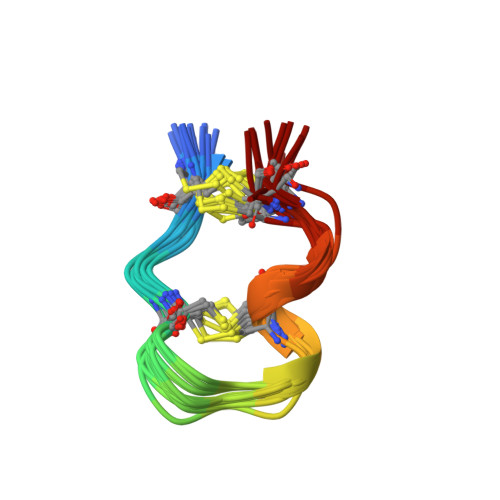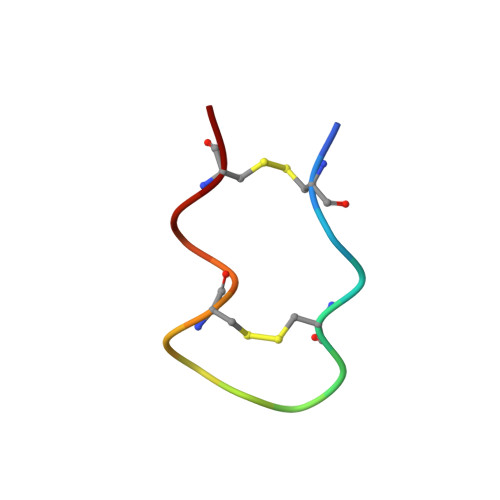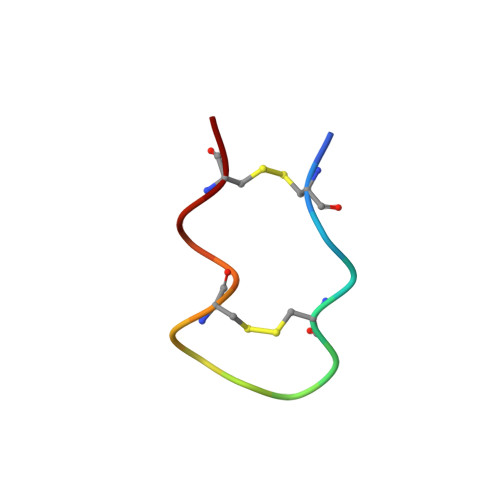Structure-antigenicity relationship studies of the central conserved region of human respiratory syncytial virus protein G.
Sugawara, M., Czaplicki, J., Ferrage, J., Haeuw, J.F., Power, U.F., Corvaia, N., Nguyen, T., Beck, A., Milton, A.(2002) J Pept Res 60: 271-282
- PubMed: 12383117
- DOI: https://doi.org/10.1034/j.1399-3011.2002.21027.x
- Primary Citation of Related Structures:
1KWD, 1KWE - PubMed Abstract:
BBG2Na is a recombinant protein, composed in part of carrier protein BB and of the central conserved domain of the attachment glycoprotein G of human respiratory syncytial virus (HRSV) subgroup A. This protein is a potent vaccine candidate against HRSV. G2Na contains several contiguous B-cell epitopes, occupying sequential positions in the linear sequence of the protein. One of the epitopes contains four cysteines that are completely conserved in known strains of HRSV and form a 'cysteine noose' motif. In this study, we analysed circular dichroism (CD) spectra of BBG2Na and its B-cell epitopes. We also used NMR and molecular dynamics simulations to determine the three-dimensional structure of the cysteine noose domain. We observed significant structural differences related to the length of peptides containing the cysteine noose. These differences show good correlation with the immunogenic activity of the peptides. It is shown that a single Val(171) addition induces a pronounced structure stabilization of the cysteine noose peptide G4a (1-4/2-3) (residues 172-187), which is associated with a 100-fold increase in its antigenicity vis-à-vis a G-protein specific monoclonal antibody.
Organizational Affiliation:
Institut de Pharmacologie et de Biologie Structurale--Centre National de la Recherche Scientifique, Toulouse, France.
















